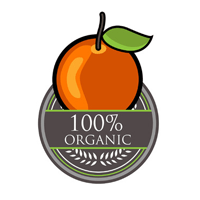
On March 15, 2007, a pet food manufacturer alerted the U.S. Food and Drug Administration to the deaths of 14 cats and dogs. Melamine, an industrial compound with no approved use in food, was found in their pet food, which was traced back to China. Worse, however, was when melamine-tainted milk killed six babies and sickened 300,000 people in China the next year.

This sort of bad news has made people fearful of imported foods, but progress is being made. Since 2007, with the help of the FDA, China is on its way to building an infrastructure to more effectively deal with food product safety. Now, there is a 13-member FDA staff in China, which has trained over 1,600 manufacturers and regulators to meet U.S. standards.
In addition to China, the FDA has established permanent staff located in India, Europe, Latin America, Africa, and the Middle East, increasing its presence worldwide.
Food Imports Growing
Imported foods currently account for 10 to 15 percent of U.S. food consumption, reports the Government Accountability Office. With the increasing globalization of our food supply, the volume will only accelerate. Food imports have increased an average of 10 percent each year over the past seven years–mostly fruits, vegetables, seafood and processed foods.
The U.S. Centers for Disease Control and Prevention reported 39 food outbreaks totaling 2,348 illnesses linked to food imports between 2005 and 2010–half in the last two years of the study. That may sound like a lot of cases, but the CDC estimates one in six Americans gets sick from foodborne illness as the result of over 1,000 food outbreaks from domestic products each year, which would equal 5,000 total outbreaks affecting 240 million people over that same five-year period in the study. To put it in perspective, imported food outbreaks are responsible for only 0.7 percent of the total U.S. cases.
The FDA Food Safety Modernization Act (FSMA,) signed into law in 2011, provides significant improvements in food safety regulations, including requiring importers to verify imported food as safe. Millions of different food products come through the 300 U.S. ports of entry every year; realistically, the FDA can inspect less than three percent.
The law also gives the FDA the authority to require accountability throughout the supply chain “from farm to fork” and encourages collaboration with foreign governments to share data.
Imported Organics
All organic products–imported and domestic–require organic certification by the USDA National Organics Program. There is an equivalency agreement between the U.S. and Canada’s organic regulations, and a similar reciprocity arrangement with the European Union. It’s important to know that organic certification does not involve a product’s quality or safety.
Certified organic means that there was no use of synthetic pesticides, hormones, and fertilizers, bioengineering, or irradiation in production. Thus, imported organic foods may be just as vulnerable as conventional imported foods to the spread of disease in multiple ways, including through insects, birds, water, manure and poor sanitation.
New Labeling
The next time you go to the store, look at your produce or meat. Somewhere on the package is a statement: “Product of (country of origin),” which conforms to the Country of Origin Labeling (COOL) law, which became effective in 2009 and is overseen by the USDA. COOL answers your “right to know” where foods, such as fruits, vegetables and many animal products, originate. Importers must make certain products are safe, sanitary, and labeled according to FDA requirements.
Globalization is a reality and more food will come from overseas, but the U.S. and foreign nations are working towards a safe food supply. Thanks to COOL, you can identify where many foods come from and decide whether to buy them.
Keep Your Imported Food Supply Safe
1. Avoid undercooked fish — no matter where it comes from — especially if you’re in a high-risk group for foodborne illness, which includes older adults, children and people with weakened immune systems.
2. Know your suppliers. Buy seafood from a reputable vendor and/or one that buys directly from distributors
3. Be informed. Sign up for food recall lists and safety alerts at www.fda.gov.
4. Practice food safety with these rules:
— Clean. A majority of foodborne illnesses are transmitted through poor hand sanitation. Wash your hands for at least 20 seconds and wash cutting board after each use.
— Separate. Bacteria spreads through cross contamination of foods, utensils and counters. Keep fresh produce and read-to-eat foods and meat, poultry and fish separate during storage and preparation.
— Cook. Use a food thermometer to cook to safe temperatures (i.e., seafood 145 degrees; ground beef 160 degrees; poultry 165 degrees)
— Chill. Keep your refrigerator below 40 degrees. Thaw food in the refrigerator. Store foods within 2 hours.
– Jennifer Neily, M.S., R.D., C.S.S.D., Environmental Nutrition
Reprinted with permission from Environmental Nutrition, a monthly publication of Belvoir Media Group, LLC. 800-829-5384. www.EnvironmentalNutrition.com. (c) 2012 BELVOIR MEDIA GROUP DISTRIBUTED BY TRIBUNE MEDIA SERVICES, INC.

